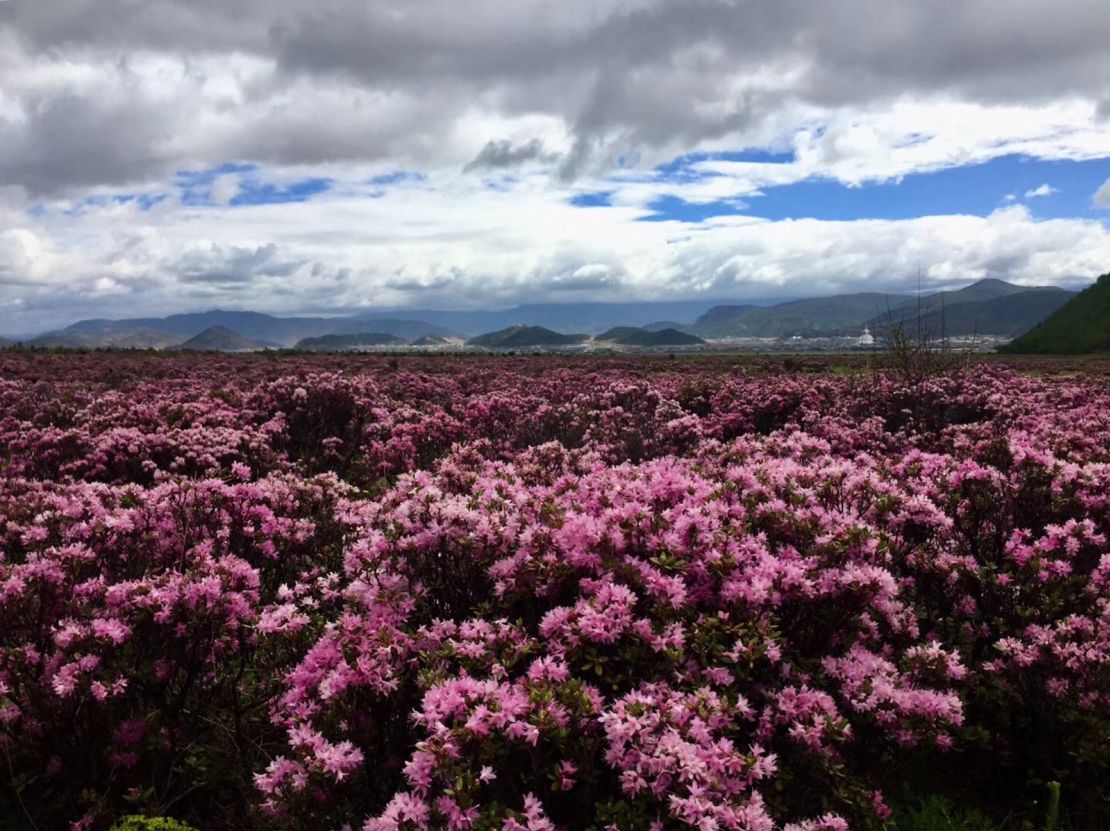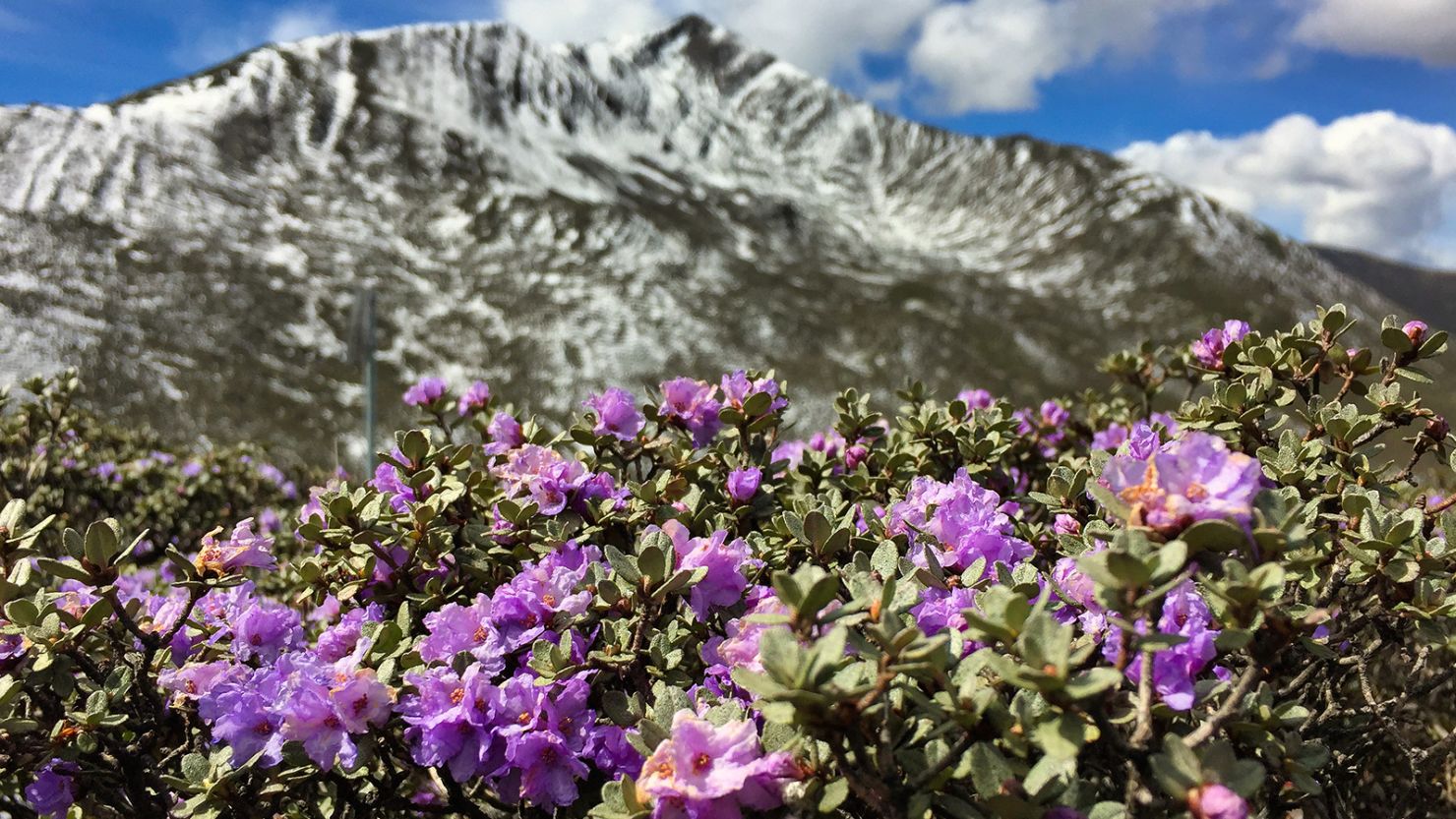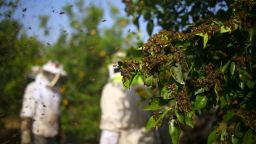Sign up for CNN’s Wonder Theory science newsletter. Explore the universe with news on fascinating discoveries, scientific advancements and more.
Amid the heights of a mountain range in southwestern China, thousands of different species of rhododendrons mysteriously live together in harmony, without fighting as they do in other areas for the pollinators that are crucial to their continued survival.
The flowers’ coexistence has baffled many scientists for years, but a new study may offer answers.
A team of American and Chinese researchers set out this summer to better understand the phenomenon. By documenting the flowering patterns of 34 different rhododendron species, they discovered that they were not blooming at the same time, but rather at different points of the season, explaining their ability to thrive so closely to one another.
The Hengduan Mountains are known for their biological diversity, spanning deep rivers to tall peaks, and their weather, which ranges from the subtropical humidity of the summer monsoons to cold, snowy winters. In the botanist community, however, the mountains are also spectacular because of the estimated 12,000 species of flowers that call them home – some 3,500 of which aren’t found naturally anywhere else on Earth.

“It’s not the kind of place that people normally think about when they think about hotspots of biodiversity,” said Richard Ree, the curator of flowering plants at the Chicago Field Museum and senior author of the study published Monday in the Journal of Ecology.
“We normally associate areas of very high species richness with tropical areas,” Ree said. “But in this case, this is a region where there are glaciers and snowcapped peaks with coniferous forests and alpine meadows.”
There are around 272 different species of rhododendrons native to the Hengduan region, according to the study. They range from low-growing shrubs to tall trees, with colors of bright purples, pinks, blues and yellows. Qin Li, a postdoctoral researcher at the Field Museum and the paper’s lead author, spent over two months visiting more than 100 sites throughout the bloom season to document their blossoms and other characteristics. She described the species on the mountains as an “ocean of flowers,” in a news release.
“Species of rhododendron across this whole region are known for being among the earliest species to flower,” Ree said. “Rhododendrons, and some other groups like magnolias, in some cases, will even put out these spectacular blooms when snow is still on the ground.”
A matter of timing
The team had a hunch that the flowers’ ability to coexist was due to the staggered timing of their blooms, but they also explored the possibility that pollinators would recognize various species differentiating themselves in a number of ways — including color, shape or size — and avoid visiting rhododendrons with different traits back-to-back. After testing for both, they found clear evidence supporting the bloom time hypothesis, according to Ree.
The existence of competition among flowers is due to their need for pollination within their species to multiply. If closely related but genetically different flowers were to bloom at the same time, they could risk a bee visiting their flower and carrying its pollen to a neighboring flower of a different species. When cross-pollination happens between two different species, it can adversely affect the fitness of at least one of those involved.
“It’s called reproductive interference. You don’t want to be wasting your gametes (reproductive cells) through pollinators carrying your pollen to species where it’s not going to be used or useful,” Ree said. “It’s a basic need for species to mate only with others of their own species, which seems to be why these species have adjusted their flowering schedules to try to minimize that kind of interference with their neighbors.”
Though the timing of their blooms has played a role in the rhodendenrons’ growth in the Hengduan region thus far, Ree said it could leave them vulnerable to climate change. “It’s going to mess with their schedules. Some species could find themselves headed toward extinction, other species might, for whatever reason, find conditions more favorable and start to dominate,” Ree said.
The Hengduan rhododendrons are most likely not the only type to develop this skill. As with other biodiversity hotspots in places such as South Africa’s cape region, Western Australia, the Mediterranean region and the California Floristic Province, Ree said this study helps researchers better understand patterns where certain flowers have undergone explosive diversification, and how they can continue to live next to one another.




